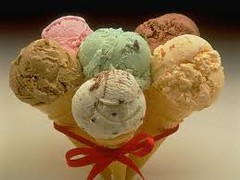
Hollywood, and indeed the world, mourned the loss of a true original on October 11, when the iconic Oscar-winning actress Diane Keaton passed away at the age of 79. The news sent shockwaves through the entertainment industry, with countless fans, colleagues, and friends expressing their profound sadness and gratitude for a talent that brightened screens and lives for over half a century. Keaton, celebrated for her quirky charm, unparalleled wit, and remarkable versatility, leaves behind an indelible mark on cinema and culture.
Her family shared a statement with People magazine, confirming her death and expressing immense gratitude for “the extraordinary messages of love and support they had received in recent days.” While the initial details surrounding her passing were not immediately available, the Los Angeles Fire Department confirmed responding to a medical call at her Brentwood home that morning and transporting a patient to the hospital. Later reports, including a death certificate obtained by USA TODAY, clarified that the immediate cause of death was primary bacterial pneumonia, occurring a few days after the onset of her illness at a Santa Monica hospital.
Diane Keaton’s health reportedly declined “very suddenly,” according to an anonymous friend who spoke to People, describing it as “heartbreaking for everyone who loved her.” The friend added, “It was so unexpected, especially for someone with such strength and spirit.” During her final months, she was surrounded by her closest family, maintaining a private space. As we navigate this period of grief, it is fitting to look back at the extraordinary life and career of a woman who truly embodied freedom and individuality, making choices that shaped not only her path but also inspired millions.

1. **The Sad News of Her Passing**
The entertainment world collectively paused on October 11, when reports confirmed the passing of Diane Keaton at the age of 79. People magazine was among the first outlets to break the news, citing a statement from her family. This initial announcement, however, did not immediately disclose the cause of death, leading to an outpouring of condolences as fans and industry peers grappled with the suddenness of the loss. The Los Angeles Fire Department did confirm that emergency responders had been dispatched to Keaton’s Brentwood home and subsequently transported a woman matching her age to a local hospital, adding to the somber anticipation of further details.
A few days later, more specific information emerged regarding Keaton’s death. A copy of her death certificate, obtained by USA TODAY on October 16, officially listed her “immediate cause” of death as primary bacterial pneumonia. The document further clarified that only a few days had elapsed between the onset of her illness and her eventual passing at a Santa Monica hospital, with no other significant contributing conditions noted. The “First Wives Club” actress was cremated on October 14, as her family continued to process their grief privately.
The Keaton family’s updated statement, reiterated by People magazine, conveyed their profound appreciation: “The Keaton family are very grateful for the extraordinary messages of love and support they have received these past few days on behalf of their beloved Diane, who passed away from pneumonia on October 11.” This gratitude underscored the deep connection Keaton shared with her audience and colleagues. The context also highlights that adults aged 65 and older face a higher risk of contracting pneumonia due to weakened immune systems and pre-existing chronic conditions, providing a medical perspective on her rapid decline.
The emotional impact of her death was palpable across Hollywood. An anonymous friend revealed to People that Keaton’s health had “declined very suddenly, which was heartbreaking for everyone who loved her.” This individual described the situation as “so unexpected, especially for someone with such strength and spirit,” indicating the shock felt by those closest to her. The friend further noted that in her final months, Keaton was surrounded exclusively by her immediate family, who consciously chose to maintain privacy, even from long-time friends, highlighting the personal and intimate nature of her final days.
Read more about: Beyond the Benevolence: Unpacking the 14 Worst Financial Scandals to Rock Celebrity-Linked Charities
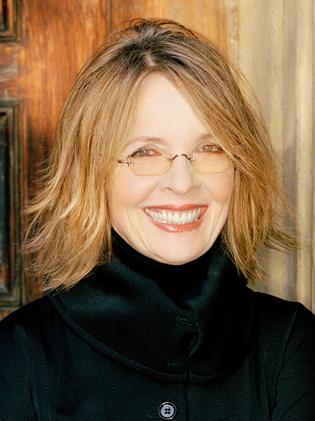
2. **Her Iconic Breakthrough: “The Godfather”**
Before she became the idiosyncratic fashion icon of “Annie Hall,” Diane Keaton made her indelible mark on cinema history with her role as Kay Adams-Corleone in Francis Ford Coppola’s seminal film, “The Godfather” (1972). At just 26 years old, this performance propelled her into the national consciousness, establishing her as a formidable presence alongside acting titans like Marlon Brando and her eventual on-off romantic partner, Al Pacino. It was a role that, despite her later self-effacing remarks, cemented her status in Hollywood.
Keaton’s portrayal of Kay Adams, the distinctly non-Sicilian girlfriend who evolves into Michael Corleone’s trusting, yet increasingly bewildered wife, provided a grounded counterpoint to the operatic drama of the Corleone family. Her scenes often depicted a woman grappling with her fiancé’s descent into the criminal underworld, offering audiences a window into the human cost of power and loyalty. This nuanced performance allowed her to demonstrate a dramatic range that would define much of her subsequent career, despite the prevailing image of her as a comedic actress.
Interestingly, despite the film’s universal acclaim and her significant contribution, Keaton herself held a surprisingly modest view of her performance. She told The Times after the movie’s release, “Right from the beginning I thought I wasn’t right for the part.” She even admitted, “I haven’t seen the film. I just decided I would save myself the pain.” Her discomfort extended to viewing herself on screen, stating, “I couldn’t stand looking at myself. I thought I looked so terrible, just like a stick in those ’40s clothes!”
This self-effacing attitude was characteristic of Keaton, who often downplayed her own talents. Yet, her performance was crucial, providing a relatable emotional core to a sprawling crime epic. Her on-screen chemistry with Al Pacino, with whom she engaged in an on-off relationship for a decade, added another layer of authenticity to their characters’ complex dynamic. This foundational role in “The Godfather” franchise not only showcased her acting prowess but also set the stage for a career characterized by both critical success and personal humility.
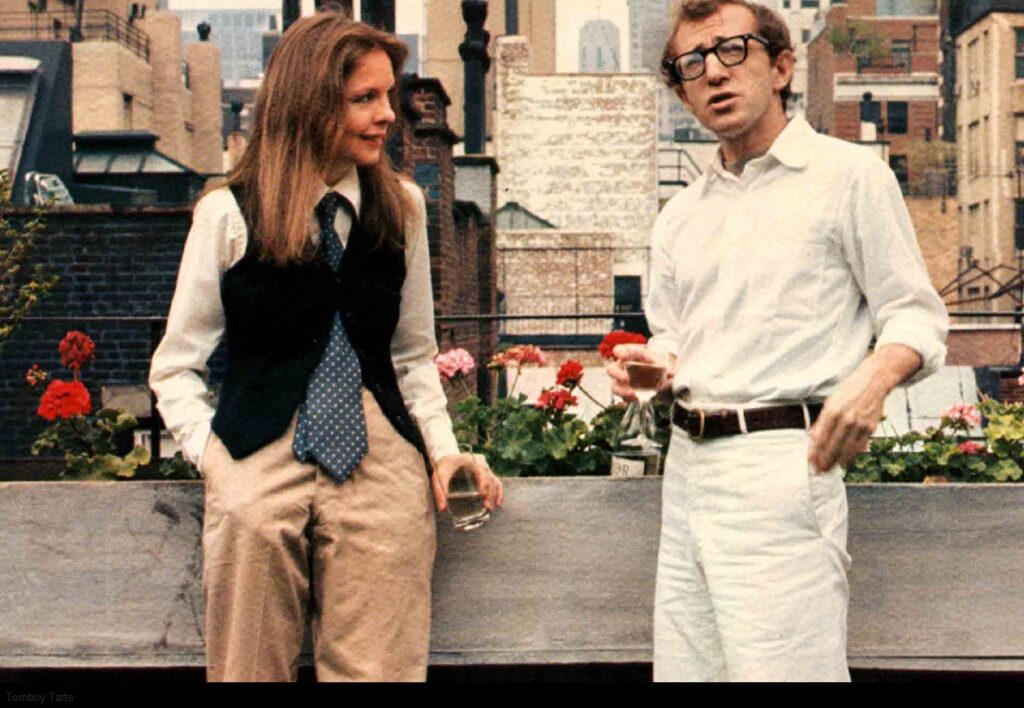
3. **The “Annie Hall” Phenomenon**
While “The Godfather” launched her, it was “Annie Hall” (1977) that solidified Diane Keaton’s place as a singular star, earning her the Academy Award for Best Actress in 1978. Directed by her then-onetime partner and long-time collaborator Woody Allen, the film captured the zeitgeist with its witty dialogue, unconventional narrative structure, and above all, Keaton’s unforgettable portrayal of the title character. Annie Hall was more than just a role; she became a cultural phenomenon, embodying a new kind of modern woman.
Annie Hall was depicted as a single woman in New York City, full of ambitions and insecurities, possessing a “definite style.” Her character was known for her “cheerful psychiatric breakthroughs,” her “questionable driving skills,” and the “lingering hints of an all-too-wholesome Midwestern upbringing.” Keaton infused Annie with an infectious spontaneity and a charm that resonated deeply with audiences, creating a character that was both aspirational and endearingly flawed. Her unique “la-dee-da, la-dee-da” phrasing became an iconic part of film history.
Keaton’s acceptance of her Oscar for “Annie Hall” was a moment reflective of her unique persona. She walked onto the stage in an outfit that defied traditional Hollywood glamour: “a linen jacket, two full linen skirts, a scarf over a white shirt and black string tie, and high heels with socks.” This ensemble was quintessential Annie, and quintessential Diane. However, in her 2014 memoir, “Then Again,” she looked back on the moment with a touch of regret, describing it as “my ‘la-de-da’ layered get-up,” showcasing her continuous self-critical, yet charmingly honest, perspective.
The film itself was a critical darling, winning three other Oscars, including Best Picture, and brought Keaton a shower of additional honors, including acting awards from the National Board of Review, the National Society of Film Critics, the New York Film Critics Circle, and the British Academy of Film and Television Artists. The Hollywood Reporter’s review lauded Ms. Keaton as “the consummate actress of our generation,” praising how she “adds the charm and warmth and spontaneity” that made “Annie Hall” so plausible and beloved. Her performance not only secured an Oscar but also cemented her legacy as an actress who could brilliantly blend comedy with vulnerability.
Read more about: Diane Keaton: A Cinematic Odyssey – Unveiling the Enduring Legacy of an Oscar-Winning Icon
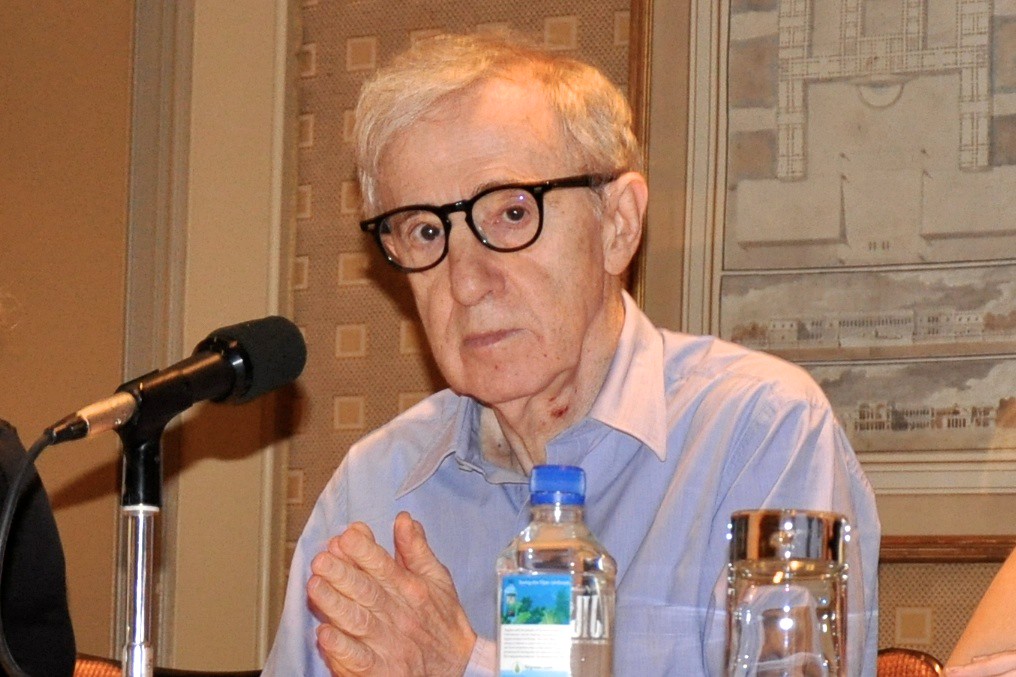
4. **A Muse and Collaborator: Woody Allen**
Diane Keaton’s career is inextricably linked with that of filmmaker Woody Allen, a partnership that began on the New York stage and blossomed into one of the most celebrated collaborations in cinematic history. Their journey together started with the 1969 theatrical production of “Play It Again, Sam,” where Keaton played a “romantically desirable married woman” opposite Allen’s “nebbishy divorced friend,” earning her a Tony Award nomination. This early success set the stage for a professional and personal connection that would span decades.
Their relationship evolved from briefly dating to a lifelong platonic friendship, characterized by deep mutual respect and creative synergy. Keaton became Allen’s muse, starring in eight of his films. Their collaborations included the movie version of “Play It Again, Sam” (1972), the comedic romp “Sleeper” (1973) set in a dystopian future, and the czarist Russia-set “Love and Death” (1975). She also showcased her dramatic abilities in his more serious films like “Interiors” (1978) and the multiple-award-winning “Manhattan” (1979), further demonstrating her versatility.
Woody Allen held Keaton’s comedic talents in exceptionally high regard, going so far as to tell The Times, “My opinion is that with the exception of Judy Holliday, she’s the finest screen comedienne we’ve ever seen.” This glowing endorsement speaks volumes about the unique spark Keaton brought to his scripts and her ability to embody his often-neurotic, yet endearing, characters with a blend of vulnerability and sharp wit. Their final film together was “Manhattan Murder Mystery” (1993), a testament to the longevity of their creative bond.
The news of Keaton’s death reportedly left Allen “extremely distraught and surprised and upset,” according to a source close to him. The source added that her passing made him “think of his own mortality,” underscoring the profound personal impact of losing not just a collaborator, but a dear friend and former partner. This enduring connection, both on and off-screen, stands as a testament to the powerful artistic and personal relationship that defined a significant era of American cinema.
Read more about: Diane Keaton: An Enduring Icon Remembered — Tracing the Legacy of an Oscar Winner’s Quirky Style and Iconic Roles at 79
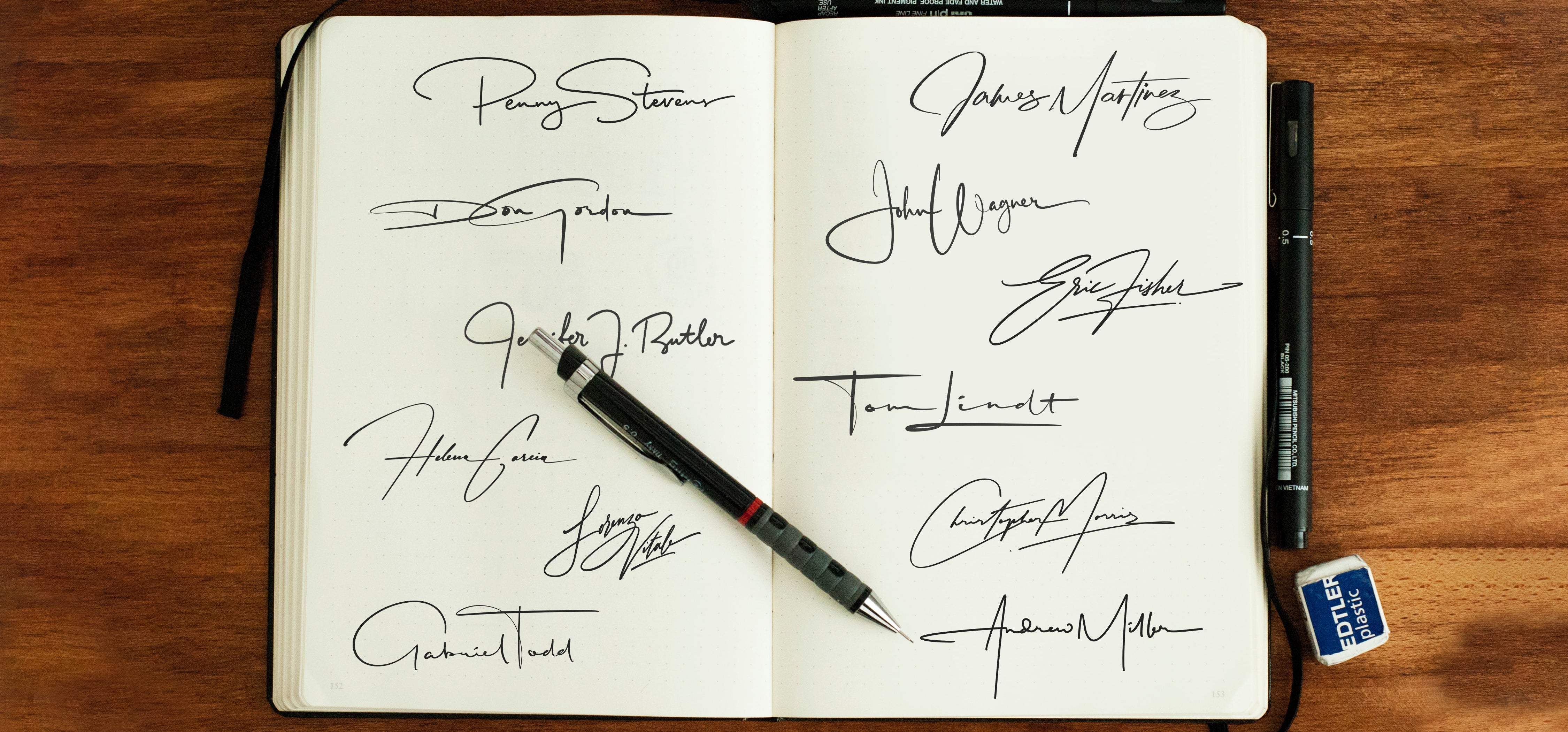
5. **Signature Style: A Fashion Trendsetter**
Diane Keaton’s influence extended far beyond her acting prowess; she was a genuine fashion icon, particularly renowned for her distinctive, often androgynous, style. Her most famous sartorial statement came from her role as Annie Hall, where her character’s wardrobe of neckties, bowler hats, vests, and khakis became instantly iconic. This look, described as having a “definite style” and making her “one of the most singular actors of a generation,” transcended the screen to influence real-world fashion, creating a lasting legacy that continues to inspire.
Her personal style was just as memorable as her on-screen ensembles. When accepting her Academy Award for “Annie Hall” in 1978, Keaton wore an outfit that epitomized her unconventional approach to glamour: “a linen jacket, two full linen skirts, a scarf over a white shirt and black string tie, and high heels with socks.” This choice was a bold departure from the typical sequined gowns of the Oscars, showcasing her individuality. Reflecting on it later in her memoir, she affectionately, if self-critically, referred to it as “my ‘la-de-da’ layered get-up,” highlighting her humble perspective despite its trendsetting impact.
Off-screen, Keaton was beloved for her whimsical sense of humor and a signature style that often featured “tuxedos, turtlenecks, bowler hats and black-rimmed eyeglasses.” This blend of masculine-inspired pieces with her inherent feminine charm made her a unique figure in an industry often dictated by conventional beauty standards. She was, as noted in the context, a “noted trendsetter” who even continued to share her style on Instagram, where she amassed 2.6 million followers, further cementing her influence on modern fashion.
Many saw her style as more than just clothing; it was an extension of her personality. An appreciation piece mentioned how Diane Keaton “showed us how to dress up our insecurities and be kooky with confidence,” suggesting that her fashion choices were a powerful expression of self. She was someone who embraced her uniqueness, proving that authentic style comes from within. Her ability to make every role unforgettable was matched by her ability to make every outfit iconic, fostering a sense of connection with audiences who admired her for being unapologetically herself.
Read more about: From Classic Grandeur to Modern Marvels: The 14 Most Iconic Car Designs Shaping Automotive History, According to Experts
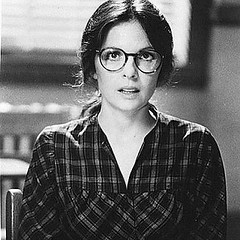
6. **Beyond Comedy: Dramatic Depth**
While Diane Keaton is often celebrated for her comedic timing and ability to infuse humor with vulnerability, her career was equally marked by powerful dramatic performances that garnered critical acclaim and multiple Oscar nominations. Her versatility allowed her to seamlessly transition between zany comedies and piercing dramas, proving her range as a truly gifted actress. These dramatic roles showcased a different facet of her talent, revealing a profound depth and emotional transparency.
One of her most significant dramatic turns came in “Reds” (1981), a sweeping historical drama directed by and co-starring Warren Beatty, with whom she also had a relationship. In this film, Keaton played Louise Bryant, an intense 1910s writer who becomes involved with Greenwich Village socialists and Bolshevik revolutionaries. Her performance as the journalist and suffragist earned her her second Academy Award nomination for Best Actress, demonstrating her capacity to embody complex, historical figures with conviction and emotional resonance.
Another powerful dramatic role that earned her an Oscar nomination was in “Marvin’s Room” (1996). Here, Keaton played the selfless daughter who is diligently caring for her slowly dying father and her scatterbrained aunt, only to receive a leukemia diagnosis herself and require a bone-marrow transplant. Her poignant portrayal, alongside co-stars Meryl Streep, Leonardo DiCaprio, and Hume Cronyn, highlighted her ability to convey deep suffering and unwavering devotion, further illustrating her skill in tackling emotionally challenging material. This role was her third nomination for best actress.
Beyond these nominated roles, Keaton also delivered a “performance of a lifetime” in the 1977 wrenching drama “Looking for Mr. Goodbar,” as a young teacher who leads a dangerous double life by frequenting singles bars at night. Molly Haskell’s review in New York magazine called it “harrowing, powerful, appalling.” Some observers even suggested that while she won the Oscar for “Annie Hall” that same year, many voters had been influenced by her brilliant, albeit hard-to-take, performance in “Mr. Goodbar.” Her filmography consistently displayed her ability to “flex her dramatic skills on the big screen,” proving that her talent extended far beyond the comedic roles for which she was often typecast.
Read more about: A Legacy Etched in Light: Hollywood and Fans Bid Farewell to the Iconic Diane Keaton

7. **Beloved Roles in Iconic Comedies of the ’80s and ’90s**
While Diane Keaton’s dramatic prowess was undeniable, her infectious charm and distinctive comedic timing continued to light up the screen through the 1980s and 1990s, solidifying her status as a beloved star across generations. Her ability to infuse humor with intelligence and a touch of the everyday made her characters deeply relatable, charming audiences in a string of critically acclaimed and hugely popular films during these decades. She consistently brought a unique blend of vulnerability and sharp wit to her roles, making each one unforgettable.
One standout was the 1987 hit “Baby Boom,” where Keaton played a high-powered big-city executive whose life takes an unexpected turn when she inherits a baby, prompting a move to rural Vermont. Written by Nancy Meyers, this film perfectly showcased Keaton’s gift for physical comedy and emotional depth as her character navigated the hilarious and often heartwarming challenges of sudden motherhood. Her performance resonated with many, portraying the universal struggle of balancing career and personal life long before it became a mainstream discussion.
Her collaborations with Steve Martin in “Father of the Bride” (1991) and its 1995 sequel further cemented her comedic legend. As the endearing matriarch Nina Banks, she brought warmth and grounded humor to the chaotic process of her daughter’s wedding, and later, the arrival of new family members. These films became quintessential family comedies, largely thanks to Keaton’s ability to create a character that felt like everyone’s favorite, slightly frazzled, but always loving mother.
Perhaps one of her most iconic comedic ensembles was in “The First Wives Club” (1996), where she starred alongside fellow legends Goldie Hawn and Bette Midler. This major box-office hit was a triumphant comedy of revenge and justice, in which Keaton’s character, among others, discovers her trusted therapist is having an affair with her estranged husband. Her portrayal of a woman reclaiming her power and dignity, delivered with her signature blend of neurosis and determination, contributed significantly to the film’s enduring popularity and its message of female empowerment. Bette Midler herself lauded Keaton, stating, “She was hilarious, a complete original, and completely without guile, or any of the competitiveness one would have expected from such a star. What you saw was who she was…oh, la, lala!”
Even earlier, in 1975, Keaton lent her comedic talents to “Harry and Walter Go to New York,” starring with James Caan and Elliott Gould. These roles collectively demonstrate her enduring appeal and masterful ability to capture the hearts of audiences with her distinctive brand of humor, making her a permanent fixture in the pantheon of Hollywood’s greatest comedic actresses.
Read more about: Beyond the Game: 12 Legendary Athletes Who Conquered Hollywood and the Powerful Career Wisdom They Impart
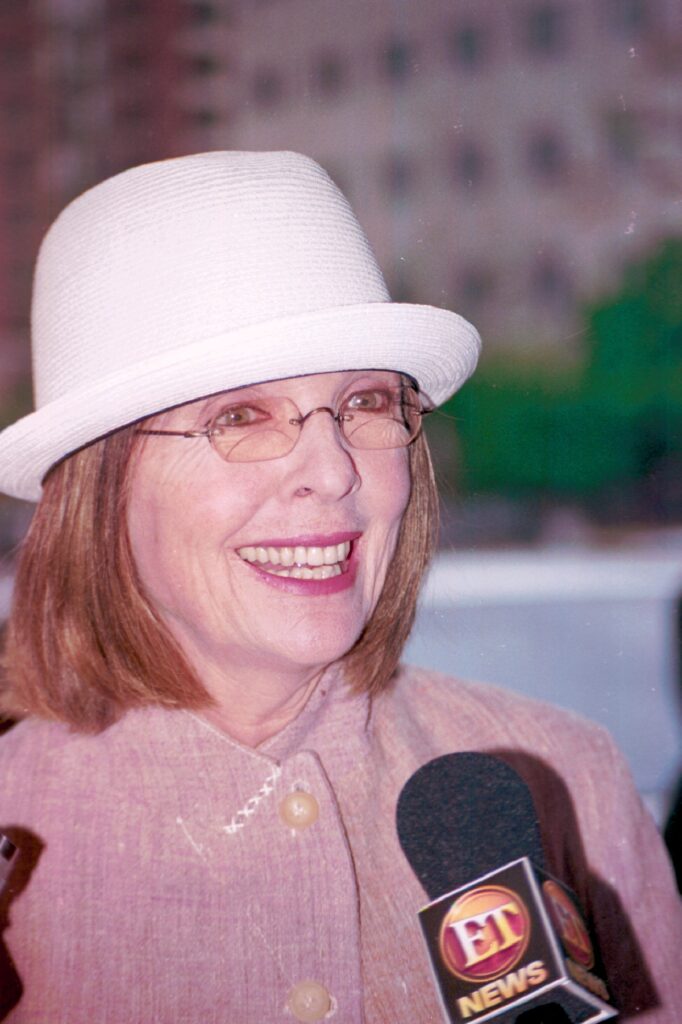
8. **Later Career Successes, including ‘Something’s Gotta Give’**
As Diane Keaton transitioned into the 21st century, her career showed no signs of slowing down, consistently delivering memorable performances that reaffirmed her status as a vibrant, leading lady. She continued to captivate audiences with her relatable characters and distinctive charm, proving that talent and magnetism only deepen with time. Her later career was marked by a series of hits, particularly her ongoing collaborations with writer-director Nancy Meyers, which brought her a new wave of critical and commercial success.
Her performance in Nancy Meyers’ 2003 romantic comedy “Something’s Gotta Give” stands as a monumental achievement in her later career. Starring opposite Jack Nicholson, Keaton played Erica Barry, a successful playwright who finds unexpected romance with a much older, commitment-phobic music executive and a younger, charming doctor. Her portrayal was lauded for its authenticity and emotional transparency, earning her a second Golden Globe and her fourth Academy Award nomination for Best Actress. The film not only became a box-office sensation but also resonated deeply with audiences for its celebration of mature love and self-discovery.
Keaton continued to charm in ensemble films like “The Family Stone” (2005), where she played the family matriarch, anchoring a star-studded cast including Rachel McAdams and Sarah Jessica Parker. Her ability to portray complex family dynamics with warmth and humor made the film a holiday classic. Other notable comedic roles during this period included “Because I Said So” (2007), “5 Flights Up” (2014) opposite Morgan Freeman, and “Poms” (2019), where she starred as a retirement-aged cheerleader, embracing joy and sisterhood with spirited conviction.
Her enduring popularity was further evidenced by the success of the “Book Club” franchise, starting in 2018, which brought together a quartet of legendary actresses for a fun exploration of friendship, love, and literature in later life. Her final film, the comedy “Summer Camp” (2024), about three old friends at an eventful reunion, served as a poignant capstone to her illustrious filmography, showcasing her continuous passion for storytelling. Over two decades, Keaton made more than 20 films, a testament to her unwavering dedication and demand in Hollywood. Nancy Meyers herself once praised Keaton’s comedic skills, comparing them to those of iconic stars Katharine Hepburn and Jean Arthur, underscoring her unique place in cinema history. As Octavia Spencer eloquently put it, “From Annie Hall to Something’s Gotta Give, she made every role unforgettable.”
Read more about: Diane Keaton: An Enduring Icon Remembered — Tracing the Legacy of an Oscar Winner’s Quirky Style and Iconic Roles at 79
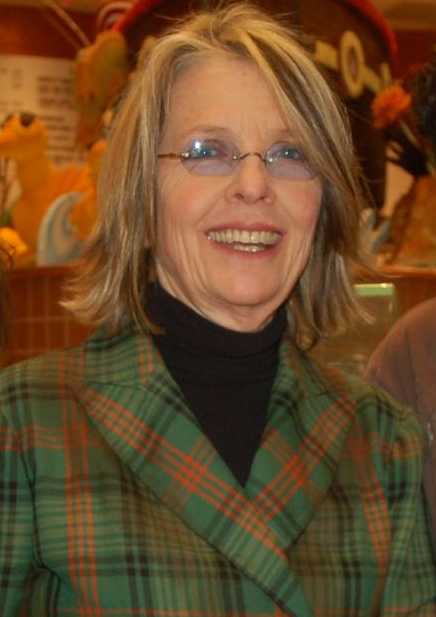
9. **Multifaceted Talents: Director, Writer, and More**
Diane Keaton was far more than just a captivating actress; she was a true polymath, a ‘multihyphenate’ whose creative spirit extended across various artistic disciplines. Her interests and talents blossomed into successful ventures as a director, writer, photographer, and even a singer, revealing a boundless curiosity and a relentless drive to express herself through different mediums. Her diverse portfolio showcases a remarkable intellect and an unwavering commitment to art in its many forms.
Her directorial debut came with “Heaven” (1987), a documentary exploring beliefs about the afterlife, demonstrating her philosophical curiosity and willingness to tackle profound subjects. She then ventured into fictional filmmaking with “Unstrung Heroes” (1995), a touching story about a teenage boy and his idiosyncratic uncles. This film garnered critical praise, with Peter Travers of Rolling Stone calling it charming, and Rita Kempley of The Washington Post describing it as “sweet madness” and a “sensitive coming-of-age story,” even earning a selection for Un Certain Regard at the prestigious Cannes Film Festival. She later directed herself, Meg Ryan, and Lisa Kudrow in the comic drama “Hanging Up” (2000), a project based on a novel by Delia Ephron and penned by the celebrated Ephron sisters.
Keaton also embraced the written word, authoring a dozen or so books, including volumes on fashion, art, and architecture. Her 2017 book, “The House That Pinterest Built,” highlighted her keen interest in interior design. Her memoirs, “Then Again” (2011) and “Brother & Sister” (2020), offered deeply personal insights into her life. Sheila Weller, reviewing “Then Again” for The New York Times Book Review, praised it as “provocatively honest” and described Keaton as “bitingly wry, ironic and tough about herself.” In it, Keaton reflected, “I learned I couldn’t shed light on love other than to feel its comings and goings and be grateful,” and playfully challenged conventional wisdom: “If beauty is in the eye of the beholder, does that mean mirrors are a waste of time?”
Beyond directing and writing, Keaton also harbored a passion for music, famously singing two numbers in “Annie Hall” and making a cameo as a 1940s nightclub singer in Woody Allen’s “Radio Days” (1987). Last year, she even released a holiday song titled “First Christmas.” While she famously dismissed her early singing ambitions as foolish, her willingness to explore this artistic avenue was characteristic of her adventurous spirit. Her diverse talents painting a picture of an artist who continuously sought new ways to engage with the world, making her a truly unique figure in Hollywood. Curiously, despite her stage origins, she once humorously remarked on the prospect of a lifelong theater career, saying, “Night after night? Doing a play? That’s my idea of hell,” demonstrating her clear preference for the spontaneity and variety of film.
Read more about: Hollywood’s Timeless Talents: Meet the 13 Oldest Living Stars Still Shining Bright Today
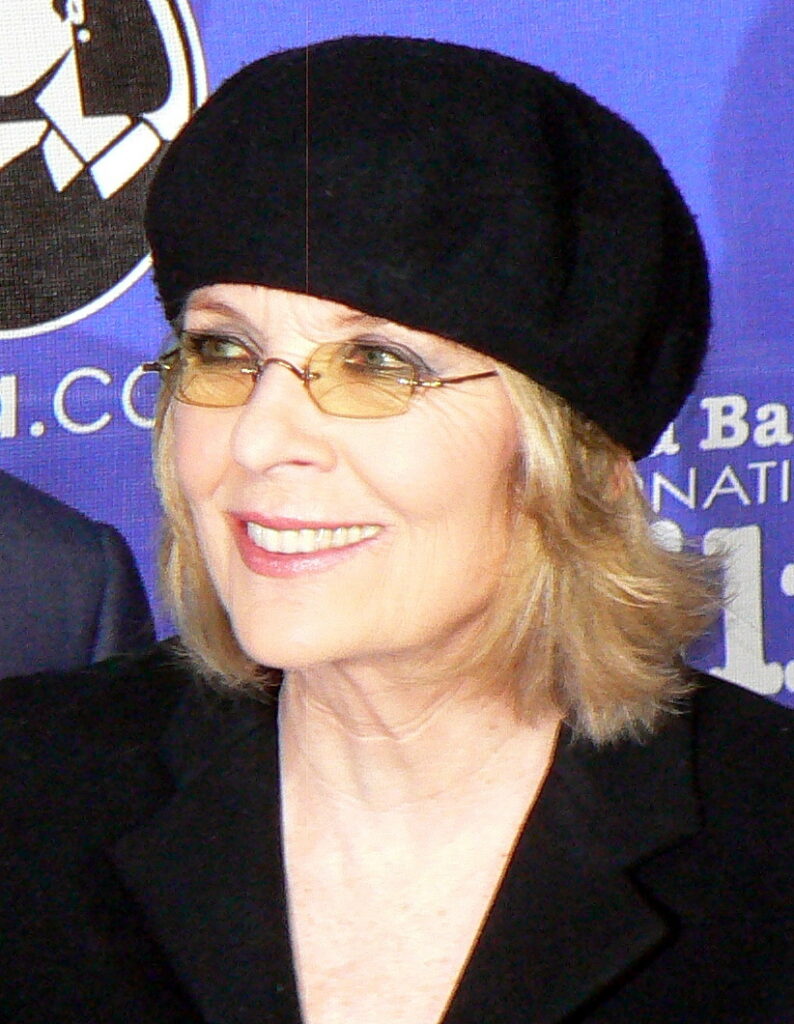
10. **Personal Life Choices: Motherhood and Remaining Unmarried**
Diane Keaton, a woman who consistently marched to the beat of her own drum, made personal choices that diverged from typical Hollywood narratives, particularly regarding her relationships and family life. She famously never married, despite high-profile romances with some of Hollywood’s biggest leading men, including Al Pacino, Warren Beatty, and her longtime collaborator, Woody Allen. Her path reflected a deep commitment to personal freedom and individuality, a theme she articulated herself when she told ABC News in 2022, “What made my life interesting was I had freedom. You know, that I had the opportunity to make my choices with time as it went on.”
Her on-off relationship with Al Pacino spanned a decade, beginning in 1974 around the release of “The Godfather Part II,” adding an authentic layer to their on-screen chemistry. She also dated Woody Allen early in their careers, a relationship that evolved into a lifelong platonic friendship and one of cinema’s most fruitful artistic partnerships. Later, she was involved with Warren Beatty, a relationship that concluded around the premiere of their epic historical drama, “Reds,” in 1981. These significant connections, while never leading to marriage, clearly enriched her life and informed her artistic output.
However, it was her journey to motherhood that truly defined her personal fulfillment. After her 50th birthday, Keaton made the heartwarming decision to adopt two children: a daughter, Dexter, now 29, and a son, Duke, now 25. This choice underscored her independent spirit and her desire to build a family on her own terms, providing a loving home for her children. Her dedication to her family was unwavering, and she found immense joy and purpose in raising them, showcasing another facet of her compassionate nature.
Throughout her life, Keaton maintained a refreshingly self-aware and humble perspective. In 2019, she told People magazine, with her typical self-deprecating wit, “Getting older hasn’t made me wiser. I don’t know anything, and I haven’t learned.” This candid honesty, coupled with her lifelong battles with self-consciousness about her appearance and bulimia in her 20s, revealed a deeply human side to the icon. She credited her acting teacher, Sanford Meisner, with giving her “the freedom to chart the complex terrain of human behavior within the safety of his guidance,” and helping her “learn to appreciate the darker side of behavior,” a testament to her journey of self-discovery and acceptance that profoundly influenced her personal and professional life.
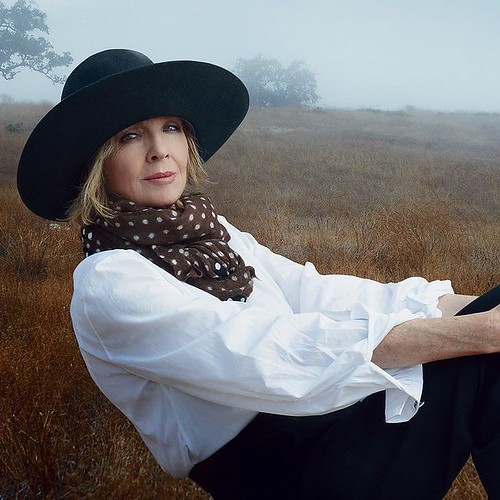
11. **Philanthropic Passions: A Heart for Animals and the Unhoused**
Beyond the glitz and glamour of Hollywood, Diane Keaton was a woman of profound empathy and a steadfast commitment to causes close to her heart. Her philanthropic efforts, though often conducted quietly, reflected her deep compassion for the vulnerable members of society—both human and animal. This aspect of her life, perhaps less publicized than her cinematic achievements, spoke volumes about her character and the values she cherished most deeply.
The Keaton family, in their statement to People magazine confirming her passing, beautifully encapsulated her giving spirit and directed how best to honor her memory. They explicitly stated, “She loved her animals and she was steadfast in her support of the unhoused community, so any donations in her memory to a local food bank or an animal shelter would be a wonderful and much appreciated tribute to her.” This clear directive highlights her enduring concern for those without a voice or a home, serving as a powerful testament to her unwavering dedication.
Her love for animals was well-known to those closest to her, a bond that offered her companionship and joy. She often shared glimpses of her life with her beloved pets, even posting a photo with her dog, Reggie, on Instagram just months before her passing. This genuine affection extended beyond her own furry friends, inspiring her support for animal shelters, organizations that provide care and find homes for countless animals in need. It was a natural extension of her nurturing and compassionate personality.
Equally passionate was her commitment to the unhoused community. Keaton understood the profound challenges faced by individuals experiencing homelessness and actively sought to alleviate suffering through her support of food banks and related charities. Her advocacy for these causes showcased a sincere desire to make a tangible difference in the lives of others, reflecting a woman who used her platform not for self-promotion, but for genuine societal good. Her family’s request for donations in her memory serves as a touching reminder of her legacy of kindness and generosity.

12. **Profound Tributes and Lasting Legacy**
The news of Diane Keaton’s passing sent a palpable ripple of sorrow and admiration throughout Hollywood and across the globe, as countless stars, filmmakers, and fans paused to reflect on the extraordinary life and indelible legacy of this true original. The tributes poured in, painting a vivid picture of a woman who was not only a gifted actress but also an inspiring force of nature, known for her unique spirit, intelligence, and unwavering authenticity.
Francis Ford Coppola, who directed her in ‘The Godfather,’ expressed profound sentiment, stating on Instagram, “Words can’t express the wonder and talent of Diane Keaton. Endlessly intelligent, so beautiful…Everything about Diane was creativity personified.” Filmmaker Nancy Meyers, with whom Keaton collaborated on several beloved films, echoed this sentiment, writing, “We have lost a giant. A brilliant actress who time and again laid herself bare to tell our stories.” These heartfelt words underscore the depth of respect and admiration she commanded from her peers.
Her ‘First Wives Club’ co-star Bette Midler shared a particularly moving tribute on Instagram, describing Keaton as “The brilliant, beautiful, extraordinary Diane Keaton has died. I cannot tell you how unbearably sad this makes me. She was hilarious, a complete original, and completely without guile, or any of the competitiveness one would have expected from such a star. What you saw was who she was…oh, la, lala!” Similarly, Leonardo DiCaprio, who played her nephew in ‘Marvin’s Room,’ hailed her as “one of a kind. Brilliant, funny and unapologetically herself…she will be deeply missed,” while Octavia Spencer lauded her as “a force, a woman who showed us that being yourself is the most powerful thing you can be. From Annie Hall to Something’s Gotta Give, she made every role unforgettable.” Even her former partner, Al Pacino, broke his silence, referring to her simply as “my partner,” a powerful testament to their enduring bond.
Keaton’s impact was formally recognized in 2017 when she received the American Film Institute’s Lifetime Achievement Award, a ceremony where luminaries like Meryl Streep, Reese Witherspoon, and Emma Stone gathered to honor her. Meryl Streep beautifully summarized her influence, stating that Keaton “has given us so much happiness.” Her unique “la-dee-da, la-dee-da” phrasing from ‘Annie Hall’ and her heartbreaking turn as Kay Adams-Corleone in ‘The Godfather’ remain iconic, showcasing her range from whimsical charm to profound dramatic depth. As one appreciation piece noted, “Her singular fashion sense — best captured in ‘Annie Hall’ — masked the actor’s insecurity. But when it came to Diane Keaton, we fell in love with the whole package.” She was, indeed, the kind of actor who helped make films timeless and truly unforgettable.
Read more about: Beyond the Limelight: How 14 Celebrity Moguls Master Private Equity and Hedge Funds
Diane Keaton’s life was a masterclass in living authentically. She taught us to embrace our quirks, to define our own paths, and to pursue our passions with unwavering zest. Her legacy isn’t just a collection of brilliant performances; it’s an enduring testament to the power of individuality, kindness, and genuine artistic expression. Though she may have departed, the light she brought to cinema and to the lives of so many will undoubtedly continue to shine brightly, inspiring generations to come to live with the same courage and creativity that defined her remarkable journey. Her spirit, forever woven into the fabric of Hollywood and beyond, will never truly fade away.


